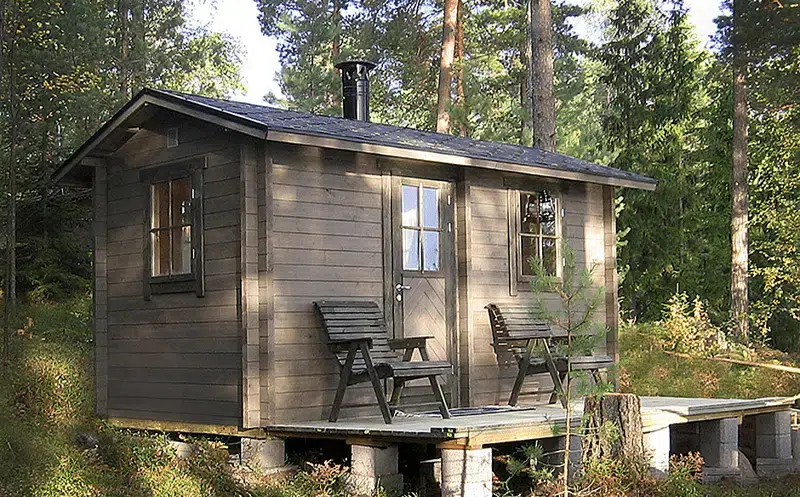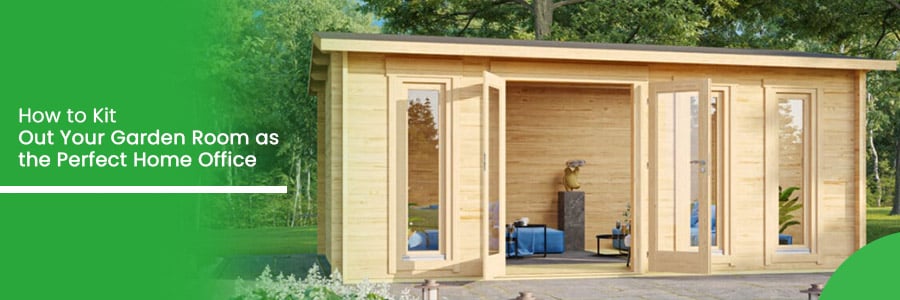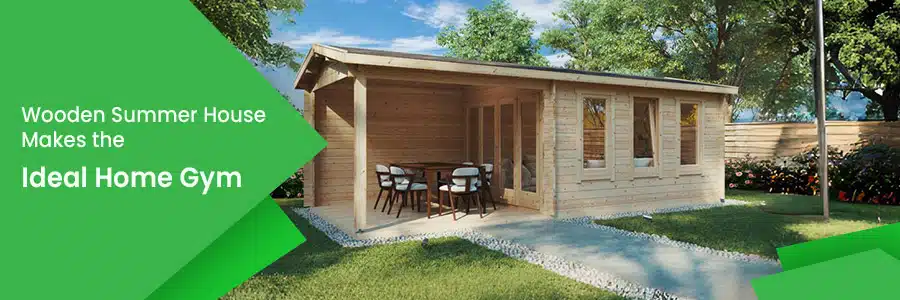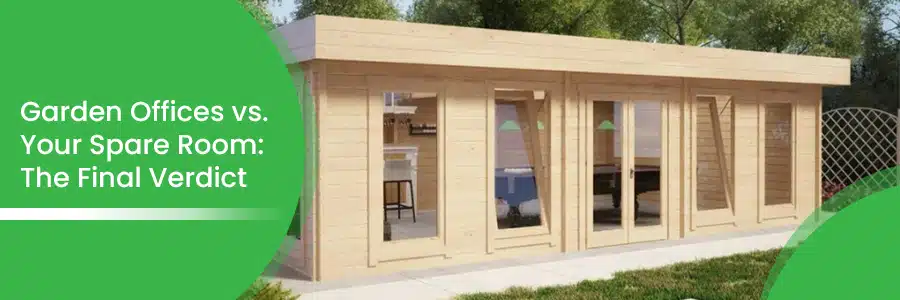Meditation in The Garden Room – How to Set Up The Garden Shed For Mindfulness
11.08.2017
Garden sheds and summer houses provide room in the garden for so many purposes. Such a broad variety of interesting hobbies are to be tried out there, from the traditional gardening to building and modifying air drones, Yoga, or even collecting antiques, soap carving, or handcrafting things, and they are not only providing a self-directed activity balancing everyday work life, but are also taking up space which all to often exceed the capacities that the main house can offer.
If a garden is available then a garden room is the logical solution to create more space which is often possible at astonishingly favourable conditions. A summer house or garden shed provide living space at costs that no stone buildings or extensions of the house can compete with.
A huge variety of ready built sheds of all styles and sizes can be found on the internet, and it’s usually no problem to find just the style that fits perfectly into your garden, resembles or contrasts the style of the main building, has the right size and floor plan and even enriches your garden optically and functionally.
Now, everybody can imagine how to organize such a garden room as a gym or a garden office, a work shop to build or repair things, an atelier or a garden lounge, but what are the requirements for a meditation retreat?
In the following article we will look at some aspects of how to meditate and what is needed to fit a garden room for this purpose.
A garden room for meditation should be safe, quiet, and comfortable
Why move to the garden room for meditation at all? Unlike most other hobbies, meditation does not need any “equipment” nor does it take a lot of space to do it; so you might say that it is not worth investing in a garden room for that.
If we look at Asia, the historical origin of meditation, we find beautiful gardens, the Zen-Gardens, especially designed by great masters of landscape gardening, well skilled in Feng Shui, the harmony of the elements, the balancing of Yin and Yang, the flow of the universal energy through all manifestations including themselves. So, if the art of meditation really does not require anything, how is it, that the students of this art did not practice at the market or on the side walk?
Well, some more progressed students may really have done this, but we are talking about beginners here.
Contemplating these things has already provided us with answers to the initial question: Meditation is an art that needs a safe and quiet place to practice and it can be supported by a peaceful and harmonic natural setting as you could create in a garden room inside your beautiful garden.
Meditation is easy to start, but not so easy to make progress with
You don’t need a garden room to just find a place to sit for 15 to 20 minutes, but that’s not the difficult part in meditation. If we look at statistics we find that more than 90% of Britons believe that meditation has potential to enhance physical and psychic well-being and health. 40% have tried it, but only about 4% really practice it regularly.
Why is this so? Needless to say that we live in times of constant distractions from ourselves. TV, the internet, smart phones, social media, a whole industry, the so called entertainment industry, constantly compete for our attention and try to shift our focus to the outside while our inside is portrayed as rather unattractive and in need of constant updates by the latest … what ever product.
Meditation is the exact contrast to this. No sensations on the outside, but to our own inside we shift our attention, and to find things that can match the glaring attractions of marketers and public relations specialists luring at the outside we need practice, and a suitable room, as such a garden room. Years of practice of doing nothing, at least apparently so, is something that just does not fit into our fast-paced times. And this is, where the 36% have failed: at exercising regularly, every day for longer than, let’s say, three to four weeks.
As a matter of fact, succeeding with meditation is difficult because you need the discipline, the stamina to do this for years. However, it has to be said that it already gets easier after two or three months because of the first achievements in health, vitality, pain-reduction, even temper, concentration and motivation become palpable after the first sessions and further advantages will follow. Experience in mindfulness makes meditation more effective.
A garden room can provide a tranquil, harmonious space to make the daily exercise more enjoyable
The main house is full of everyday life, memories, ringing phones, messages on social media, ringing door bells, reminders of things that need to be done. Little things like these could make the difference when it comes to the challenge if you will be one of the 4% or one of the 36%.
A garden room that is deliberately shut off the grid of phones, Wi-Fi and internet, nicely furnished, maybe with a view into the garden with its wealth of an indefinite variety of shades of soothing greens is one factor that can make it easier to keep at it for these first weeks and become a regular practitioner just as so many successful people did.
Furnishing does not need much special equipment. A cushion or a mat to sit on would be the most important piece because many meditation exercises are performed in a seated position. Usually cross-legged is OK for beginners, however, teachers often try to emphasize the advantages of the lotus posture or, if this is not possible, at least the half-lotus posture, or the so called Burmese posture. If you are able to sit in one of these postures comfortably for 20 minutes, then a small cushion to lift your bottom up a bit may be helpful. For those, who can not do any of these, sitting on any regular chair is OK. Even an armchair or a couch in the garden room may be of purpose. You would just sit with your feet on the floor, but you should maintain an upright posture and must not lean your back on the backrest.
Then you just sit and direct your awareness to your own inside. Your natural breath, actively relaxing tense muscles while maintaining an erect posture. Start exploring the space, where really everything happens. The Indian Guru and meditation master Sadhguru teaches that nobody has ever experienced anything except inside themselves.
Make the garden room a place where you like to stay
A wooden garden room is very well suited to become an ideal space for meditation; much better than most places in the main house. Being in nature with its healing properties and natural harmony, being in a safe place without the distractions of everyday life.
It could be good to establish a kind of routine. For example a time of the day when you have some free time to host the daily 20 minutes of exercise. It is not recommended cramping them into a busy schedule. The routine could include certain devices in the garden room. Some people like to light a candle or/and incense sticks. Some feel inspired by a wood-carved statue of a meditating master, some like to look at pictures depicting their chakra, they want to concentrate on healing, and so on. If you are interested in the art of finding the “real world” inside of you then the internet offers a host of various techniques, including also standing – and walking meditations. If you’d like to include a MBSR (Mindfulness Based Stress Reduction) guided body scan sometimes, then you might provide a mat to lay on in the garden room and electrical to be able to play audio.
Any summer house or garden shed will do that can be insulated and heated during the winter. If your garden room is set up in a way that you feel comfortable staying there, this will help you stay at it and get over the first weeks and months until your meditation practice yields the first results. From then on it gets much easier.
Categories:
BlogWant to discuss over phone. Let us call back to you
If you need any additional info regarding any product, please fill in the below form and we will get back to you, usually the same or next working day.
Have any questions regarding some product?
If you need any additional info regarding any product, please send us your questions.



